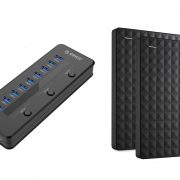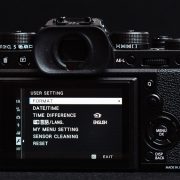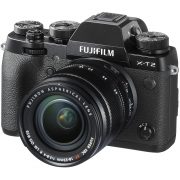How to take pictures in manual mode
Knowing how to take pictures in manual mode is one of the fundamentals of photography. I would recommend that to anyone who owns a proper camera. It will help you understand the process and as you’ll see from the practical guide below, it is very simple.
I’m not suggesting that we take all our pictures in manual mode. I would not recommend it for portraits, for example. I don’t want to fumble with my camera settings when trying to capture the mood and the face expressions of my subjects. I know how to take pictures in manual mode, I just choose not to do that for portraits. Portraits I shoot in Aperture priority, Auto ISO, with minimum shutter speed of 1/125. All I then need to do is direct my subject, control the depth of field with Aperture, and the camera will always get me the correct settings for ISO and enough shutter speed to freeze the subject.
It’s different for landscapes and studio work, especially with strobes. There, it is very important to know how to take pictures in manual mode, so this is a little bit of an overview of the method, something that I teach in my private photography lessons. This is going to be a practical guide, so keep your camera handy.

For night photography it is essential to take pictures in manual mode
What is it that we are actually capturing when we say we took a picture.
What we are capturing when we press the shutter button is light. This may be the hardest thing to imagine, that light is a substance. Something that actually has volume or quantity. What I mean by that is that in a bright spot there is a lot of light particles, and in a shaded area there is a lot less light. So the quantity of light is different depending on the subject we are photographing. Our job as photographers is to capture the right amount of light to expose correctly. If we capture too much light, we get an over-exposed, bright image, if we capture too little light the image will be dark.
The correct brightness of an image is, of course subjective. Some situations call for less light to create dark, moody look, some images look better when they are brighter. It is up to us as photographers to decide how bright the image should be, but the important thing is that we have to capture an image, not just a white or black frame. So getting correct exposure is paramount.
What controls the exposure in manual mode:
- Aperture
- Shutter Speed
- ISO
Aperture is just another name for a hole. It is the opening in a lens. By changing the aperture we are making the hole bigger or smaller which in term will allow more or less light in. Making an image brighter or darker.
Shutter is a curtain in front of the sensor that controls how long the sensor is exposed to the light. When we press the shutter button, the curtain opens and light starts flooding into the sensor. When the Shutter Speed is long more light gets gets in and is absorbed by the sensor, making the image brighter. If we keep the shutter speed short, less light will get into the sensor making the image darker.
ISO is a measure of sensitivity of the sensor. I like to call it a way to artificially brighten up the subject. If we go from ISO 100 to ISO 200, we are making the subject twice as bright. This is just amplification of the available light. We need to be careful how high we go with ISO, because the more we artificially amplify the available light the more grain, or digital noise we introduce to the image. The quality of the image will deteriorate with high ISO.
Exercise: How to take pictures in manual mode
Sitting at home, set your camera in Manual mode and choose the following settings.
- ISO 100
- Shutter Speed 1/1000
- Aperture f9
Take a picture and review it.
No, your camera is not broken and you didn’t do anything wrong. What you see is a black image and what it means that you simply didn’t capture enough light. So what do you do?
Increase the Shutter speed. Remember that the shutter speed is a fraction. So from 1/1000 to make the shutter stay open longer you go to 1/500, then to 1/250, 1/125 … and so on. You may have to change the shutter speed to something like 1/5 to get perfectly exposed image, so change the shutter speed step by step and observe how your image gets brighter.
You can do the same by opening the hole in the lens (Aperture) wider. From f9, you can go f8, f5.6, f4… etc… observe that when you increase the opening of the hole, the number gets smaller. It’s because it is a fraction too. 1/8 is smaller than 1/4, which is smaller than 1/2 …
With aperture you have less settings to work with. Most kit lenses will not open wider than f3.5, while the shutter speed can go all the way to 30 seconds.
Of course you will never hold the camera and shoot at 30 seconds, because you will not be steady enough. You will get a blurry image. A rule of thumb for me is to shoot at a shutter speed no slower than 1/100 to insure that I freeze the subject and get a sharp image.
If you want to take a picture in manual mode at home, you will find that there is not enough light. Even when you open the aperture to widest setting say f3.5 you will need to go down to maybe shutter speed of 1/20 to get perfect exposure. That is not fast enough to prevent a blurry image.
What you should do then is simply adjust your ISO.
Keep your aperture at f3.5, or the smallest value your lens allows. Set your Shutter Speed to 1/100, to freeze the subject and prevent blurriness, then adjust ISO UP. From 100 go to 200. This will make the image twice as bright. If it’s not enough, go to 400, 800, 1600, go as high as you need to get the right exposure.
And there you go. This is how to take pictures in manual mode.
Using the back of the camera to review images allows you to arrive at the correct exposure. You can see if an image is too bright or too dark. You then simply adjust the settings until you get the exposure you want. With film cameras some 20 years ago, you had to know what you will get when you press that shutter button, because it took a few days to get the images from the lab. It’s so much easier to take pictures these days. And taking pictures in manual mode is really not a big deal anymore.








Leave a Reply
Want to join the discussion?Feel free to contribute!